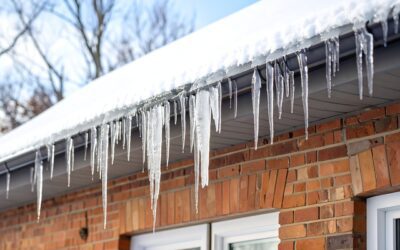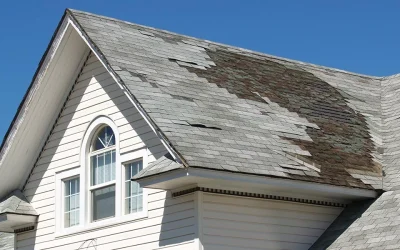8 Things to Consider When Replacing Your Roof: A Guide for Indiana Homeowners
Planning a roof replacement in Indiana isn’t just a matter of picking shingles and setting a date. With the region’s severe weather patterns, local building codes, and the importance of long-term value, choosing the right materials and contractor can protect your investment for decades. There are several factors to consider when planning a roof replacement, including cost, materials, and timing, all of which can significantly impact your decision.
If you’re a homeowner in Indianapolis, Bloomington, or surrounding areas, here’s what to know before you move forward. Many homeowners in Indiana face roof replacement due to harsh weather and aging roofs. A new roof can also boost your home’s curb appeal and increase its property value.
Key Takeaways
- Schedule a free inspection to assess your roof’s current condition.
- Choose materials rated for Indiana’s storm and winter climate.
- Prioritize contractors who offer warranty-backed installations.
- Understand how ventilation and insulation affect roof lifespan.
- Explore financing options for manageable budgeting.
1. Know When It’s Time for Replacement
Most asphalt roofs last between 15 to 30 years. But in Indiana, hailstorms, ice dams, and high winds often shorten that timeline. Warning signs like curled shingles, chronic leaks, or daylight in the attic are clear signals—but professional inspections can reveal hidden damage, especially after severe weather. Additional signs you may need a new roof include damaged shingles, such as cracked or missing shingles, and water stains in the attic, which can indicate leaks or water intrusion. If these issues are widespread, your roof may need to be replaced rather than repaired.
Free inspections from Kingdom Roofing Systems help homeowners make informed, pressure-free decisions about roof health and replacement timing.
2. Choose Weather-Resilient Materials
Indiana’s mix of heavy snow, intense sun, and high wind calls for materials that can withstand extreme shifts. Common roofing materials like asphalt, metal, and wood each offer unique benefits, and choosing the right roof shingles can significantly impact both the durability and appearance of your home. At Kingdom Roofing Systems, we recommend:
- GAF Timberline HDZ® Shingles – known for superior impact resistance and advanced LayerLock® Technology
- Synthetic underlayment – for moisture protection beneath shingles
- Ice and water shields – especially vital in valleys and near gutters
There is a wide variety of roofing products available, including energy-efficient and impact-resistant options to suit different needs and styles.
Using all new materials for your roof replacement ensures a complete system that maximizes longevity and warranty coverage.
Explore GAF Roofing Options
3. Understand Your Ventilation & Insulation Needs
A successful roof replacement goes beyond shingles. Proper attic ventilation and insulation are essential for regulating moisture and temperature, especially during Indiana winters. Without them, you risk mold growth, ice dams, and energy loss.
Our team evaluates these components during every inspection, recommending upgrades only when they’ll enhance long-term performance and efficiency. We often suggest solutions like ridge vents and attic fans to improve attic ventilation and help draw in cool air, which regulates temperature and boosts overall energy efficiency.
4. Verify Licensing, Insurance & Certifications
Roof replacement is a major investment—your contractor should be up to the task. It’s essential to hire experienced roofing contractors and a reputable roofing company with a strong local presence. In Indiana, that means choosing a company that is:
- Fully licensed and insured
- Backed by manufacturer certifications, like our GAF Master Elite® status
- Locally experienced, with a record of integrity and satisfied homeowners
To ensure you receive the best value and workmanship, get quotes from multiple roofing companies and check the qualifications of their roofers.
With Kingdom Roofing Systems, you’ll also benefit from 14+ years of proven service and faith-based values that prioritize transparency and care.
5. Factor in Permits and Local Codes
Every Indiana municipality—from Marion to Bloomington—has unique building codes and inspection requirements. Our team manages all permits and ensures full compliance, including:
- Ice barrier installation where required
- Proper nailing and underlayment techniques
- Drip edge and flashing specs
Providing specific details about your roof is essential to ensure permits are accurate and comprehensive.
Code inspections may also reveal necessary repairs that must be addressed before the project can proceed. Skipping these steps can void warranties and compromise safety, so it’s best left to experts who know Indiana’s codes inside and out.
6. Plan for Financing and Warranty Protection
A new roof is a serious investment, but it shouldn’t be a financial burden.
But our replacements come with lifetime manufacturer warranties and optional workmanship guarantees, giving you lasting peace of mind.
7. Schedule Your Project for the Right Season
Indiana’s spring through early fall provides the ideal weather window for roof work. While emergency repairs can be handled year-round, full replacements are best done when temperatures and humidity allow for proper sealing and curing.
Booking early in the season also helps avoid delays from weather or scheduling backlogs.
8. Understanding the Roof Replacement Process
The roof replacement process is more than just swapping out old shingles for new ones—it’s a carefully coordinated project that ensures your home stays protected for years to come. It all starts with a comprehensive roof inspection, where a qualified roofing contractor assesses the current roof for damage, wear, and any trouble spots that might require attention. This inspection helps determine whether a full replacement is necessary or if repairs to the existing shingles will suffice.
Once the need for a new roof is confirmed, your contractor will walk you through the available roofing material options, taking into account your home’s roof pitch, energy efficiency goals, and budget. The right roofing material can make a significant difference in both the performance and the overall cost of your roof replacement. After selecting materials, the replacement process moves forward with the removal of the old roofing, installation of new underlayment, and careful placement of new shingles or other materials. Throughout the project, a reputable contractor will keep you informed, address any concerns, and ensure the work meets both manufacturer standards and local building codes. By understanding each step of the roof replacement process, you can feel confident and prepared as your new roof takes shape.
9. Preparing for Your Roof Replacement
Getting ready for a roof replacement involves more than just scheduling the work—it’s about making informed choices and setting your home up for a smooth project. Start by researching different roofing materials, such as asphalt shingles, metal roofs, and wood shakes, to find the best fit for your needs and budget. Each material has its own benefits, from the classic look of shingles to the durability of metal roofs, so consider what matters most for your home.
Next, it’s essential to choose a reputable roofing contractor who can provide a clear, detailed estimate that outlines the total project cost, including materials and labor costs. Don’t hesitate to ask questions about the replacement process, timelines, and what to expect on installation day. Before work begins, prepare your property by clearing the area around your house, moving vehicles, and protecting landscaping or outdoor furniture. Taking these steps helps the roofing crew work efficiently and keeps your belongings safe. With careful planning and the right team, your roof replacement can be a stress-free experience that adds value and protection to your home.
10. Energy Efficiency Considerations
When replacing your roof, energy efficiency should be a top priority. The roofing material you choose can have a big impact on your home’s comfort and utility bills. Metal roofing, for example, is highly energy efficient because it reflects sunlight and helps keep your home cooler in the summer. In contrast, asphalt shingles tend to absorb more heat, which can increase cooling costs during hot Indiana summers.
Beyond the roofing material itself, factors like roof pitch, insulation, and ventilation play a crucial role in your home’s overall energy efficiency. A properly insulated and ventilated roof helps maintain a consistent indoor temperature, reducing the strain on your heating and cooling systems. This means lower energy costs and a more comfortable living environment year-round. When planning your new roof, talk to your contractor about the best ways to maximize energy efficiency, from selecting the right roofing material to ensuring your attic is well insulated and ventilated.
11. Roof Durability and Maintenance
Investing in a new roof is just the beginning—ongoing maintenance is key to ensuring your roof stands the test of time. Regular roof inspections are essential for catching small issues before they turn into costly repairs. Homeowners should also keep gutters and downspouts clear to prevent water damage and maintain proper drainage around the roof.
Choosing a durable roofing material, such as architectural shingles or metal roofing, can significantly extend the lifespan of your roof and reduce the need for frequent repairs. These materials are designed to withstand harsh weather and resist common problems like water damage and wind uplift. By staying proactive with maintenance and selecting high-quality materials, you can protect your investment and enjoy the peace of mind that comes with a strong, long-lasting roof over your head.
FAQ: Roof Replacement in Indiana
Q: How long does a roof replacement take in Indiana?
Most residential roofs take 1–3 days, depending on size, materials, and weather.
Q: Is a permit required for roof replacement?
Yes. Our team handles all local permit requirements for you.
Q: What’s the best shingle type for Indiana weather?
GAF Timberline HDZ® shingles provide exceptional storm resistance and feature the industry’s first WindProven™ Limited Wind Warranty, offering dependable protection against Indiana’s toughest weather.
Q: Do you offer financing options?
Yes, including 5-year no-interest financing (with approval).
Q: What areas do you serve?
We serve Marion, Indianapolis, Bloomington, and surrounding Indiana counties.
Ready to Protect Your Home?
Don’t leave your roof to chance. Whether you need a second opinion or you’re ready to move forward, Kingdom Roofing Systems offers free inspections and expert recommendations rooted in faith, care, and Indiana expertise.
Schedule Your Free Roof Inspection!






